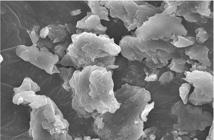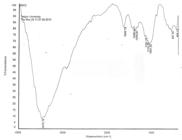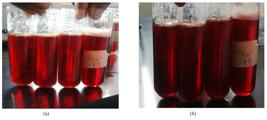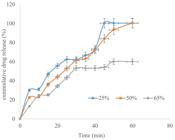Abstract
Microcrystalline cellulose synthesized from the waste of Musa balbisiana (BMCC) was characterized to explore the possibility of application in the pharmaceutical industry especially as a drug delivery vehicle. The SEM, XRD and FTIR investigations revealed that the predominantly short, non-aggregated and irregular MCC rods were highly crystalline. The moisture sorption value for BMCC was 5.65%, while total ash was 0.39%. Flow of BMCC was poor, but the product exhibited high hydration (11.7%) and swelling (277.0%) capacities. Preliminary investigation of BMCC tablets containing ascorbic acid carried out in simulated intestinal fluid, showed a concentration dependent retardation of drug release. No cytotoxicity of BMCC was observed in the hemolytic assay. Overall, the study revealed that BMCC can be prepared from an inexpensive and abundant agricultural waste and possesses properties advantageous for application in the pharmaceutical industry and may be explored further in drug delivery research.
Keywords:
drug release; microcrystalline cellulose; Musa balbisiana; physicochemical characteristics

 Thumbnail
Thumbnail
 Thumbnail
Thumbnail
 Thumbnail
Thumbnail
 Thumbnail
Thumbnail
 Thumbnail
Thumbnail
 Thumbnail
Thumbnail
 Thumbnail
Thumbnail






